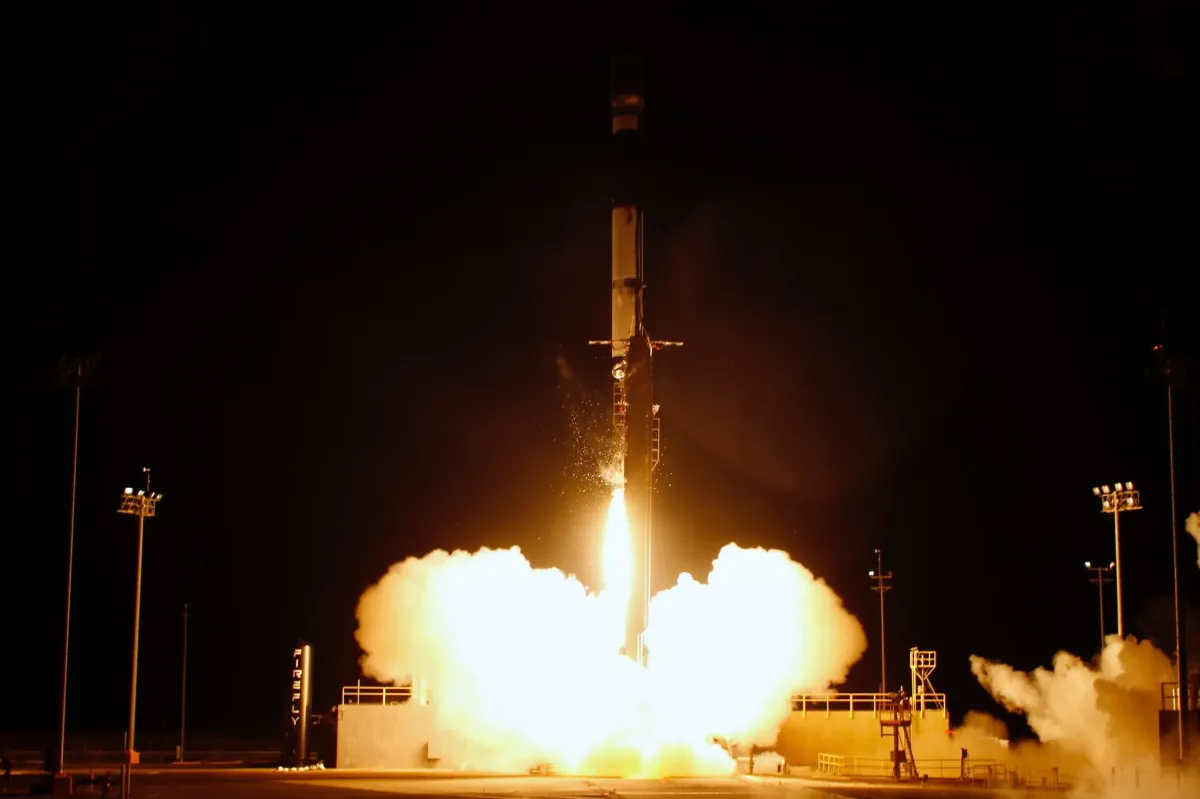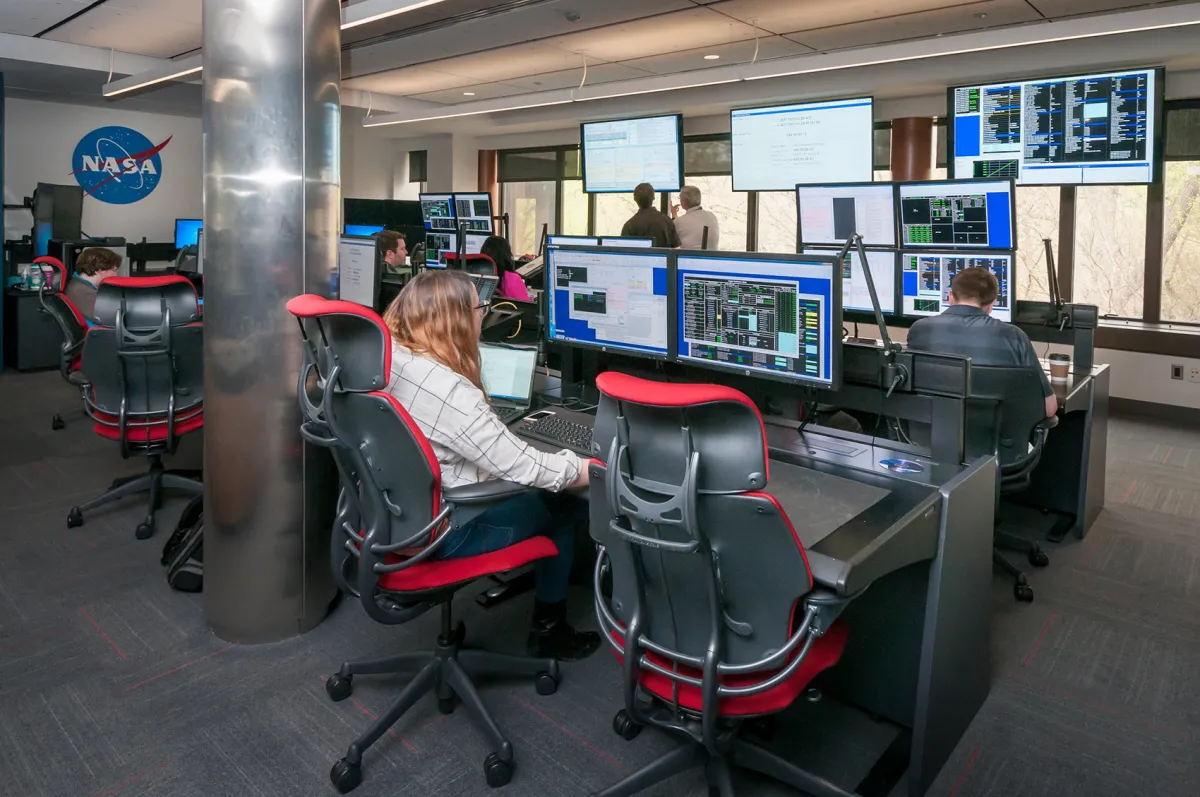Top Stories of the Week From SpaceNews
Welcome to our weekly roundup of the top SpaceNews stories of the week, brought to you every Friday! This week, ULA's Vulcan Centaur took off in a critical but imperfect test launch, a motor test clears Vega C for a return to launch, and more. | | |
|
|
|
Vega C ready for return to flight after second motor test
|
|
|
|
By Jeff Foust, Oct. 4, 2024 |
|
|
|
A second successful test of a redesigned rocket motor clears the way for Europe's Vega C rocket to return to flight nearly two years after a launch failure.
The European Space Agency said Oct. 3 that Avio, prime contractor for the Vega, successfully test-fired the Zefiro-40 motor at a company test facility in Italy. Initial analysis of data from the test show the motor performed as expected, the agency said.
This is the second test of the redesigned Zefiro-40, which serves as the second stage of the Vega C. The motor successfully fired in a test in May for 94 seconds. ESA did not disclose the burn time for this second test, but noted the latest test was performed at a lower pressure, as intended, resulting in a longer burn time. Read More
|
|
| | |
|
Vulcan competes second flight despite SRB anomaly
United Launch Alliance's second Vulcan Centaur lifted off Oct. 4 at 7:25 a.m. Eastern from Space Launch Complex 41 at Cape Canaveral Space Force Station in Florida. The test flight was needed to certify the vehicle for carrying national security payloads. ULA said that the vehicle's performance was nominal in the early stages of flight. However, the separation of the two GEM 63XL solid rocket boosters (SRB) took place nearly 30 seconds later than the timeline the company provided before launch. Read More
At an Oct. 2 briefing, officials involved with the Hera asteroid mission said they are continuing with preparations to be ready for a launch on a Falcon 9 from Cape Canaveral on Oct. 7 at 10:52 a.m. Eastern. That includes encapsulating the spacecraft into the rocket's payload fairing on Oct. 3. Read More | | |
|
|
|
| | Impulse Space raises $150 million Impulse Space announced Oct. 1 that it raised the Series B round, led by Founders Fund. Previous investors Lux Capital and Spring Tide also participated in the round along with new investors, such as venture fund DCVC. Read More
While the U.S. remains a top player in the space race, China has made significant strides, according to an Oct. 1 report titled "Gold Rush: The 2024 Commercial Remote Sensing Global Rankings" that was penned by a group of think tanks to rank the world's best commercial space-based remote sensing systems across several performance categories. Chinese systems took gold in five of 11 categories, compared to four golds for the U.S. Read More
After announcing investments of 100 million euros in January, D-Orbit revealed Sept. 27 that it raised another 50 million euros. The funds will enable D-Orbit to develop space-based cloud computing and in-orbit servicing systems. To date, D-Orbit has conducted 16 missions and flown 14 ION orbital transfer vehicles. Seven more D-Orbit missions are scheduled for 2025. Read More | | |
|
|
|
| | Yahsat and Bayanat forge AI-powered space technology champion Emirati satellite operator Yahsat and geospatial artificial intelligence provider Bayanat completed their merger Oct. 1, forming a company called Space42 valued at about $3 billion on the Abu Dhabi Securities Exchange. Led by Karim Sabbagh, a former CEO of multi-orbit satellite operator SES, Space42 aims to develop hybrid connectivity and geospatial services to meet demand from autonomous vehicles and other emerging capabilities. Read More | | |
|
|
|
| | OPINION |
|  | By Dean Bellamy, Sept. 30, 2024 | We're in a race for space agility, and America is falling behind.
Irresponsible weapons tests, such as Russia's Nov 2021 destructive test of a direct ascent anti-satellite missile test, provided a glimpse of what combat in space could entail. Equally alarming is China's heavy investments in its own military space assets. According to Air & Space Forces Magazine, Beijing has increased on-orbit assets by 500% since December 2015, enabling China's long-range strike capabilities.
Adversaries displaying reckless and provocative behaviors such as operating their satellites near United States spacecraft endanger the U.S. Space Force's ability to receive viable data when and where our warfighters need it most. Read More
No borders in the final frontier
By Sam Hutchison
By Charles Beames
|
|
|
|
SpaceNews is committed to publishing our community's diverse perspectives. Whether you're an academic, executive, engineer or even just a concerned citizen of the cosmos, send your arguments and viewpoints to opinion@spacenews.com to be considered for publication online or in our next magazine. | | |
|
| Sponsored Post |  | By Raytheon, an RTX Business
Building 30 at NASA Johnson Space Center in Houston, Texas, is hallowed ground to people who are part of the civil space industry. At approximately 3:18 p.m. on July 20, 1969, a room full of expectant engineers exhaled a collective sigh of relief when Apollo 11 astronaut Neil Armstrong, uttered the eight famous words: "Houston, Tranquility Base here. The Eagle has landed." Read More
| | |
|
| | | | |
|
|


No comments:
Post a Comment